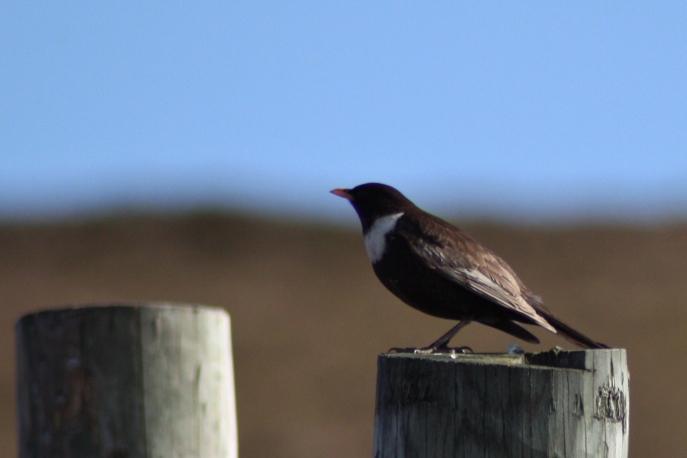
While the other reindeer herders are spending the first part of the year watching the female reindeer gradually expand outwards and wondering who is going to calve first, I am often preoccupied with the return of the birds – the first fluting song of a Willow Warbler is one of my annual highlights, heralding the onset of summer. An ‘outdoor job’ in such a beautiful location as the Cairngorms means I’m in the right place at the right time to see, bit by bit, the changing of the seasons – and nothing makes me happier than to see winter finally receding! And added to that, I’m lucky enough to work in an area with outstanding birdlife, some of which is very rare elsewhere in the country.

The first sign I look out for is the birds starting to sing once again and I can remember, on Christmas Day in 2010 in Coylumbridge, taking photos (above) in the snow of Fiona, Tilly and our team of reindeer just before our first parade of the day (we do four parades at local hotels on the big day itself) and hearing a Coal Tit sing – the first of the new breeding season. A new season starting before the other had even finished. Ironically that is my most vivid memory of the whole day! That might just have been a particularly enthusiastic, or at least optimistic, bird however, as this year I think it was into February before I heard anything singing.
After that excitement there’s a long lull as winter drags on, seemingly never-endingly, but the days tick by as we retrieve the reindeer for the daily 11am visits each morning, one by one their antlers falling off as we get later into the winter. The Red Grouse get more and more noisy in March, often erupting out of the heather calling as we walk past and startling me, although the reindeer don’t appear to even notice them. Into April and spring is definitely starting to make an appearance, the weather milder (sometimes!), the plants starting to show fresh growth, while curlews, meadow pipits, pied wagtails and black-headed gulls move back into the area from their coastal wintering areas. Meanwhile the reindeer get wider and wider…

Then the migrants start to return, back from Africa. I usually see my first Wheatear up at one of the ski car parks on Cairngorm, the white flash of their rump unmistakeable. Then there are the Ring Ouzels, basically looking like a blackbird with a white chest, but again they’ve come all the way from Africa. At the moment there is a pair hanging around the hill enclosure, shouting at me most days when I enter to feed the reindeer. The Swallows are back too, and as usual are in and out the reindeer shed up on the hill when they nest annually. In the summer, as we harness up reindeer in the shed to go trekking, I wonder how many visitors have noticed there is a swallow on her nest just feet from them, peering down at the daily proceedings. High up on the mountain plateau the Dotterels return in May, one of only two species in Britain where the male incubates the eggs so the female is the one with the brighter plumage.

But it is the little, greenish Willow Warblers that are my absolute favourite, and I keep an ear on the grapevine in April, as news of them making their way north after their arrival at the south coast trickles in, and in mid-April they arrive on mass, the birch trees lining the Sugar Bowl path up to the enclosure suddenly dripping with them. And not long after their arrival, then the calving season kicks in and spring is well on its way, winter is behind us, and all is right with my world!
Hen
